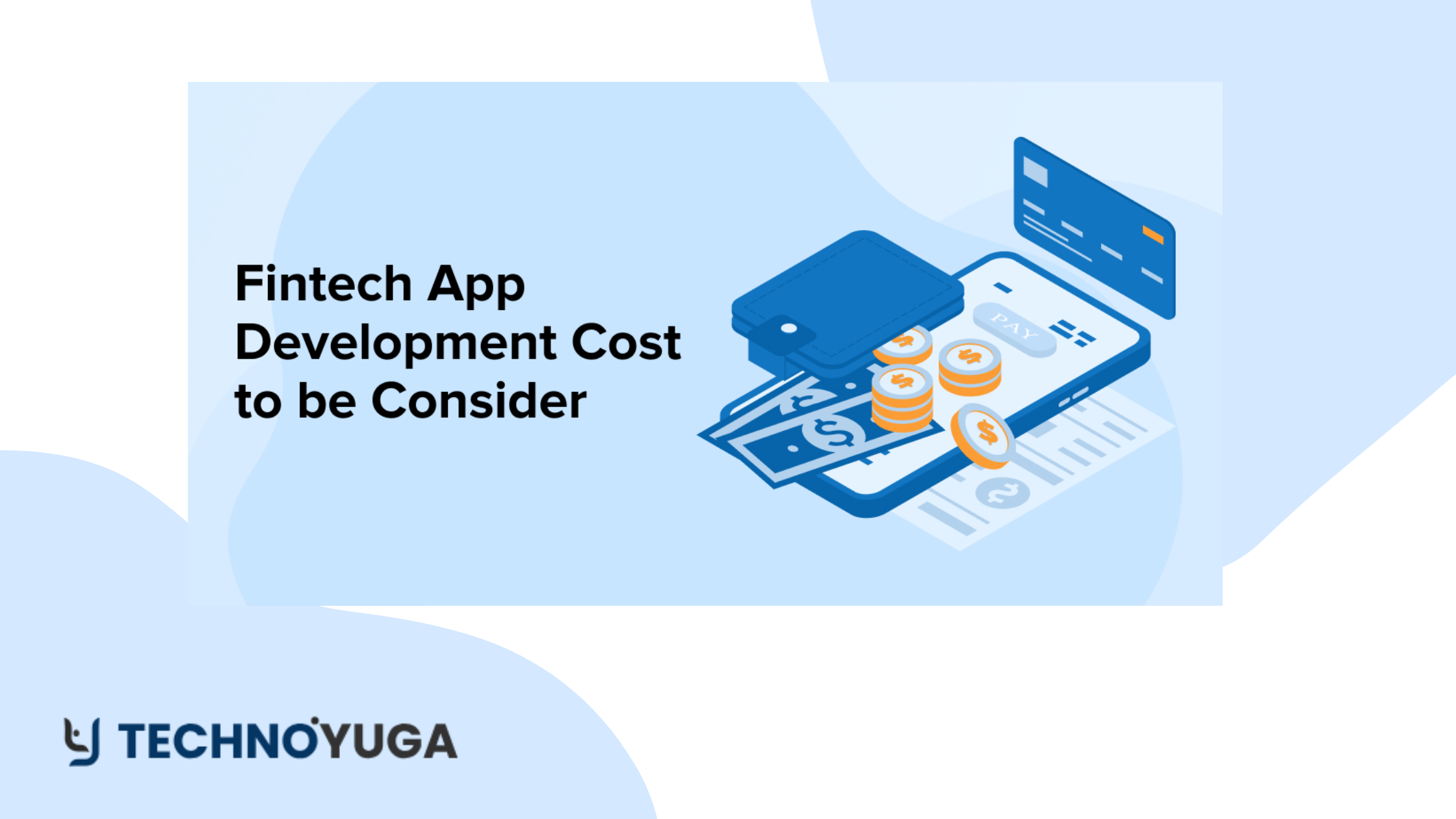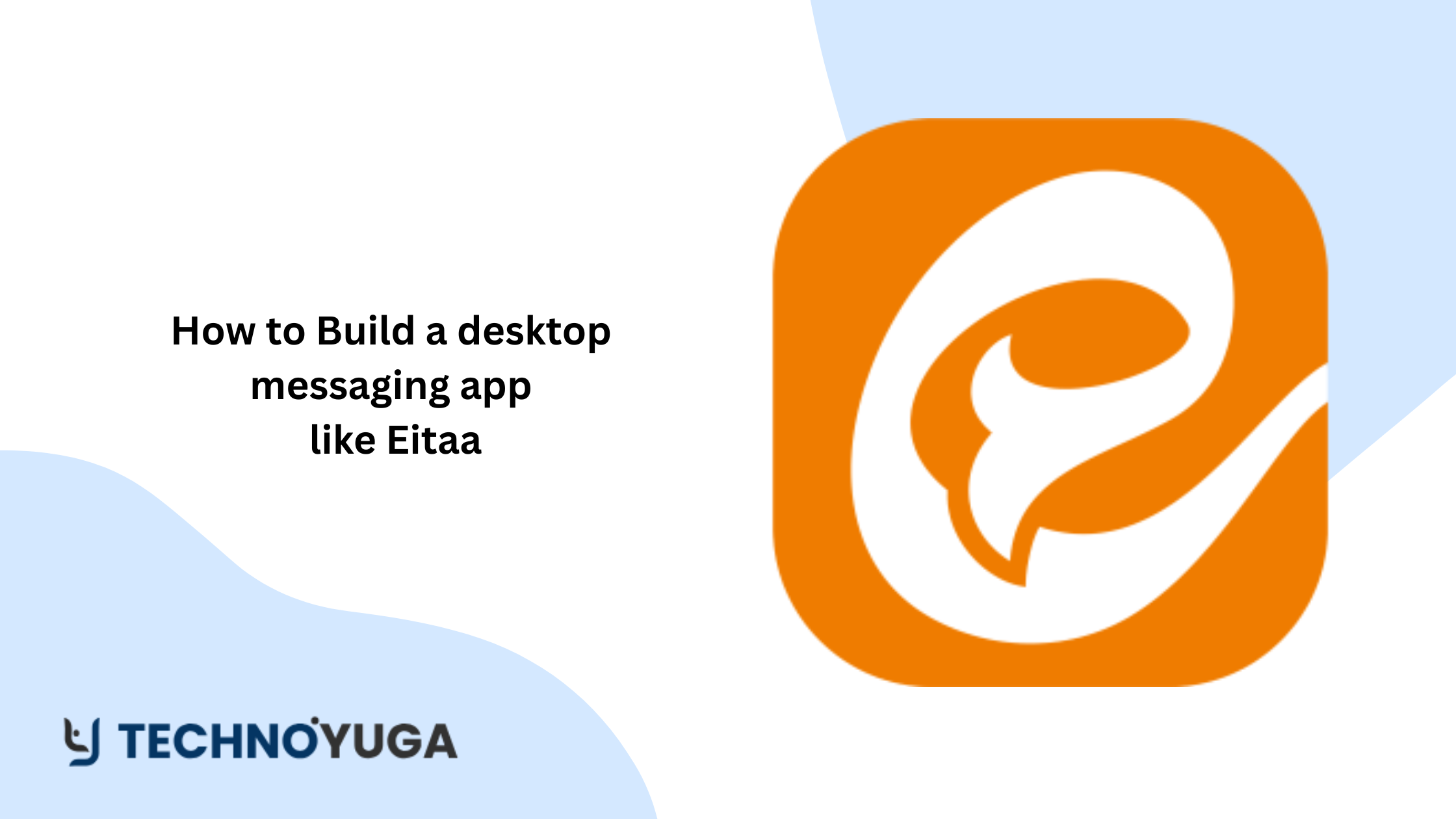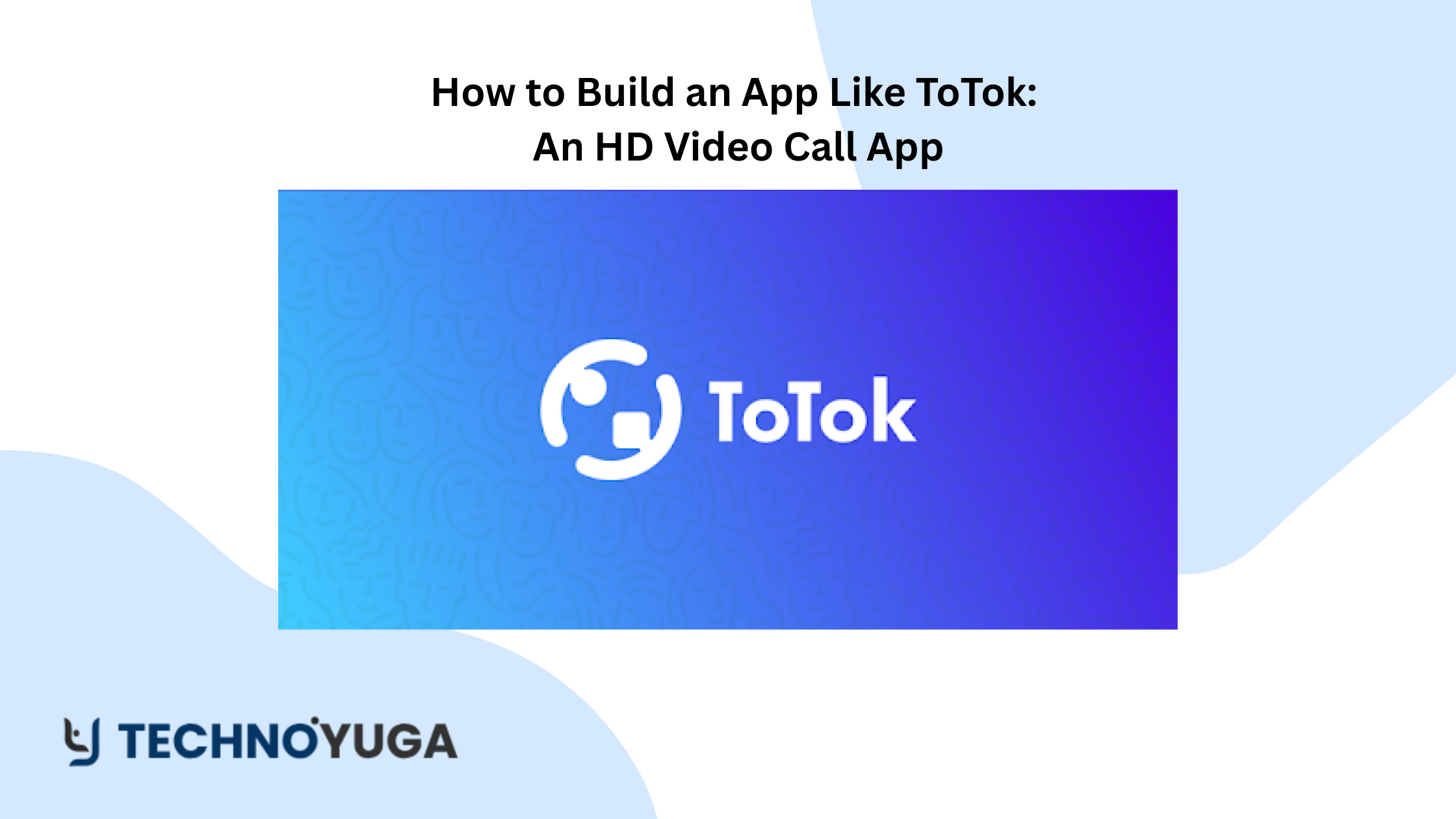Introduction
With the rapid growth of digital finance, more businesses are investing in fintech app development to offer secure and user-friendly financial services. Whether you’re planning to build a digital wallet, a mobile banking app, or a peer-to-peer lending platform, one of the most common questions is: what will be a Fintech app development cost?
The cost of developing a fintech app in 2025 depends on several factors like app features, design complexity, platform choice (iOS or Android), and development approach. Whether you’re looking for android app development, iPhone app development, or a cross-platform solution, it’s important to understand the fintech app development rates and what drives them.
This blog will guide you through the cost breakdown for fintech app development, the key factors affecting fintech app development, and how to estimate the budget based on your requirements. From the mobile app development cost to security compliance and hiring the right team, we’ll cover everything you need to know.
If you’re planning to hire dedicated developers or partner with a trusted fintech app development company, this guide will help you make informed decisions. Whether you’re a startup or an enterprise looking for an on demand app development company, understanding the cost to develop a fintech app is the first step to success.
An Overview To Fintech App Development
In today’s digital economy, Fintech app development plays a vital role in transforming how individuals and businesses manage money. From digital wallets and personal finance tools to lending platforms and neobanks, fintech apps are now essential for seamless financial operations. However, one of the most common questions among startups and enterprises is: How much does it cost to build a fintech app? The answer is not one-size-fits-all, as the Fintech app development cost depends on various factors like complexity, features, design, and the development approach.
To understand the cost of developing a fintech app, it’s important to first identify the type of fintech solution being built. Simple personal budgeting apps may require fewer resources than comprehensive banking or trading platforms. The cost to develop a fintech app also varies based on the platform—android app development, iPhone app development, or cross-platform solutions. Businesses aiming for wider market reach often choose cross-platform development to optimize their mobile app development cost.
Another critical component is the development team. Choosing to hire dedicated developers or partnering with an experienced Fintech app development company can directly impact the Fintech app development rates. Rates differ significantly based on the region—developers in North America or Western Europe typically charge more than those in Asia or Eastern Europe. An on demand app development company with fintech expertise may offer flexible engagement models to manage budgets effectively.
A realistic cost breakdown for fintech app development includes planning, UI/UX design, front-end and back-end development, third-party API integrations, security compliance, testing, and post-launch support. Each stage adds to the overall expense and should be considered while estimating the cost of developing banking apps like fintech apps.
Among the key factors affecting fintech app development are the app’s scalability, required integrations (such as payment gateways or KYC), regulatory requirements, and user experience. These elements not only influence the timeline but also dictate how to estimate fintech app development cost accurately. Skipping critical steps like robust security implementation can result in higher costs later due to compliance issues or user data breaches.
In conclusion, mobile app development for fintech requires a strategic approach to both technology and budget. Whether you are building a simple finance tracker or a fully-featured banking platform, understanding the Fintech app development cost upfront helps avoid overspending and ensures a smoother development journey. Partnering with the right Fintech app development company can make a significant difference in delivering a secure, scalable, and cost-effective solution.
Key Factors Influencing Fintech App Development Cost
Here are the Key Factors Influencing Fintech App Development Cost, explained using your provided keywords:
- App Complexity and Features: The more advanced features like real-time analytics, AI integration, or blockchain, the higher the Fintech app development cost.
- Platform Selection: Choosing between android app development, iPhone app development, or both impacts the cost of developing a fintech app, as cross-platform apps may reduce overall expenses.
- UI/UX Design: A clean and intuitive interface significantly improves user experience but adds to the mobile app development cost.
- Security and Compliance: Ensuring compliance with financial regulations and implementing strong security protocols increases the cost to develop a fintech app.
- Third-party Integrations: Integrating services like KYC, payment gateways, or fraud detection tools adds to the cost of developing banking apps like fintech apps.
- Backend Infrastructure and Scalability: A robust backend architecture for handling data, users, and transactions affects the Fintech app development rates.
- Development Team and Location: Whether you hire dedicated developers locally or outsource to an on demand app development company, labor costs will influence the total Fintech app development cost.
- Maintenance and Updates: Ongoing support and feature updates are part of the cost breakdown for fintech app development and should be planned in advance.
- Timeframe and Development Model: Agile development models may optimize the timeline and help in better understanding how to estimate fintech app development cost.
- Company Expertise: Choosing an experienced Fintech app development company can streamline the process and reduce costly errors during the Fintech app development lifecycle.
Types of Fintech Apps and Their Estimated Costs
Digital Wallet Apps
Digital wallet apps let users store money digitally and make secure online or in-store payments. These apps often include features like balance management, QR code payments, and integration with bank accounts or cards. The cost of developing a fintech app like this depends on the complexity of features and platform choice. Basic versions can cost between $20,000 to $50,000, while advanced ones with added features like peer-to-peer transfers or loyalty programs may go up to $100,000. If you’re planning mobile app development, working with an experienced fintech app development company ensures the app is secure, scalable, and compliant.
Peer-to-Peer Payment Apps
These apps allow users to send and receive money directly to one another, often in real-time. They typically require secure user authentication, real-time notifications, and bank or card integration. The Fintech app development cost for peer-to-peer payment apps ranges between $40,000 and $100,000, depending on whether you go for android app development, iPhone app development, or both. If you’re wondering how much does it cost to build a fintech app with real-time payment capabilities, security layers like encryption and fraud detection will also affect the final price. Hiring a dedicated development team can help manage budget and delivery timeline.
Personal Finance Management Apps
These apps help users track expenses, set budgets, monitor savings, and get financial advice. They require user-friendly dashboards, analytics tools, and third-party integrations like bank APIs. The cost to develop a fintech app like this starts around $30,000 for basic features and can reach $80,000 or more for apps with AI-driven financial planning tools. If you want a high-end app with data visualizations and cross-platform support, partnering with a reliable fintech app development company is essential. It’s also important to factor in mobile app development cost for regular updates and data security maintenance.
Lending and Loan Apps
Lending apps allow users to apply for personal or business loans, check eligibility, upload documents, and track repayments. These apps require strong backend systems, identity verification, and risk assessment algorithms. The cost of developing banking apps like fintech apps in the lending category can range from $50,000 to $120,000. Factors like real-time credit scoring, document scanning, and secure databases impact the overall cost breakdown for fintech app development. Whether you go for custom android app development or hybrid solutions, hiring experts from an on demand app development company can ensure compliance with financial regulations.
Investment and Trading Apps
These apps let users buy and sell stocks, monitor market trends, and manage portfolios. Core features include real-time data feeds, secure login, and integration with brokerage services. Due to the complexity and real-time functionality, the Fintech app development rates for such apps are higher—typically between $70,000 and $200,000. Advanced features like algorithmic trading, robo-advisors, or cryptocurrency support can push costs even further. To manage mobile app development cost, start with an MVP and scale features. Working with a skilled fintech app development company is crucial to ensure data security and smooth user experience.
Insurtech Apps
Insurtech apps simplify the process of buying, renewing, or claiming insurance. Users can compare policies, upload documents, and track claims from their phones. The cost of developing a fintech app for insurance typically starts at $30,000 and goes up to $90,000, depending on app complexity and third-party integrations. Whether you’re focusing on iPhone app development or android app development, features like automated claim status, policy suggestions, and chatbot support will influence the budget. To minimize risk and manage how to estimate fintech app development cost, consider working with a seasoned fintech app development company experienced in regulatory compliance.
Cost Breakdown by Development Stage
Discovery and Planning
The discovery and planning stage is where everything begins. It’s all about understanding the purpose of the app, defining the target audience, analyzing competitors, and setting clear goals. During this phase, the development team works closely with you to gather requirements and decide on the right tech stack and features. This step often includes creating user personas, workflows, and wireframes. The cost here mainly depends on the complexity of the idea and how detailed the planning needs to be.
It’s an essential phase because a strong foundation helps avoid costly changes later. In most cases, the cost of this stage is a small percentage of the total fintech app development cost, but it plays a big role in shaping the entire project. This is also the phase where you can accurately begin to understand how much does it cost to build a fintech app based on your specific needs.
Design (UI/UX)
Designing the user interface (UI) and user experience (UX) is a creative yet strategic step. A well-designed app ensures users can navigate easily, perform tasks without confusion, and enjoy using the product. In fintech, where users deal with money and sensitive information, trust and usability are key. This stage involves creating visual elements, animations, screen flows, and interactions. The design must also comply with accessibility standards and adapt across devices for both iPhone app development and android app development.
The mobile app development cost increases with more custom graphics, animations, and unique interface elements. A simple design may cost less, but a polished and user-centric UI/UX can significantly improve app retention and trust. For any fintech app development company, this stage is vital to set the tone for the rest of the development, ensuring the product is both functional and aesthetically appealing to the end user.
Development
This stage involves writing the code and turning your design and ideas into a working fintech app. It is typically divided into front-end (what users see) and back-end (server-side logic, APIs, databases). The complexity of features, security protocols, and third-party integrations significantly affect the cost of developing a fintech app. Depending on whether you’re building for iOS, Android, or both, your mobile app development cost will vary.
If you’re targeting both platforms, using a cross-platform approach or hiring an on demand app development company can help save money. A more advanced product with AI, machine learning, or blockchain will naturally cost more. Also, fintech apps often require custom features like real-time data syncing, transaction history, and multi-factor authentication. The development phase often takes the largest portion of your fintech app development cost, so it’s important to understand the full scope and decide whether to hire dedicated developers or outsource.
Testing and QA
Before launching the app, it must go through rigorous testing to ensure it works properly, is free of bugs, and meets security standards. This phase includes functional testing, performance testing, security testing, and user acceptance testing. Since fintech apps handle sensitive financial data, this stage is especially important. The cost to develop a fintech app can increase if your team skips or minimizes testing because post-launch bugs can be much more expensive to fix.
Testing for different devices, operating systems, and user scenarios ensures a consistent experience. Whether it’s iPhone app development or android app development, each platform needs tailored testing. This is also where regulatory compliance is reviewed to avoid legal issues. A reliable fintech app development company will dedicate significant time and resources to testing and QA, making this phase a critical part of the cost breakdown for fintech app development and ensuring users get a secure and smooth experience.
Deployment
Deployment is the process of launching your app to the public via platforms like the App Store and Google Play Store. This stage includes final preparations such as server setup, database configuration, and making sure everything works in a live environment. For fintech apps, deployment may also involve extra steps like registering with regulators or passing app store compliance reviews due to the sensitive nature of financial services.
While the direct cost of this stage might not be very high, it’s still important because any misstep can delay the launch. You’ll also need to budget for licenses, hosting services, and domain registration. An experienced fintech app development company will guide you through the process and ensure a smooth rollout. This phase gives you the first impression with users, so it’s critical to get everything right. It’s the final step before your audience begins to interact with the app, so every detail counts.
Post-launch Maintenance
Once the app is live, the work doesn’t stop. Ongoing maintenance is essential to fix bugs, update features, and adapt to user feedback. In fintech, where user trust and regulatory compliance are critical, regular updates are not optional. Maintenance includes monitoring the app’s performance, pushing security patches, updating third-party APIs, and keeping up with platform updates.
Whether your app is part of a larger banking system or a simple budget tracker, this phase ensures continued user satisfaction and security. The mobile app development cost doesn’t end at launch—ongoing maintenance is a recurring expense. Many businesses choose to hire dedicated developers or retain their fintech app development company for long-term support. This helps ensure quicker responses to issues and a smoother user experience. If you’re calculating how to estimate fintech app development cost accurately, always factor in at least 15–20% of your initial budget annually for maintenance and updates.
In-House vs Outsourcing Development: Cost Comparison
In-House Development
Choosing in-house development can significantly increase the Fintech app development cost due to salaries, infrastructure, and operational overheads. When evaluating how much it cost to build a fintech app, companies must include expenses like employee benefits, hiring, and training. The cost of developing banking apps like fintech apps internally is often higher because it requires maintaining a full-time team with expertise in security, compliance, and finance-specific tech. The mobile app development cost for in-house teams rises further when you develop for both android app development and iPhone app development platforms. While this model offers control, the cost breakdown for fintech app development becomes less predictable and harder to scale.
Outsourcing Development
Outsourcing to a reliable Fintech app development company or on demand app development company provides more cost-effective options. The fintech app development rates vary based on region, with Eastern Europe, Asia, and Latin America offering lower hourly rates without compromising quality. The cost to develop a fintech app is more predictable with outsourcing, as agencies provide clear estimates and timelines. Businesses looking to hire dedicated developers can choose skilled professionals for short-term or long-term needs. This approach is ideal for startups estimating how to estimate fintech app development cost and seeking scalable, expert-driven solutions in mobile app development across platforms. It reduces upfront investment and speeds up time-to-market.
Hidden Costs to Watch Out For
Regulatory Compliance and Licenses
A major yet often overlooked Fintech app development cost is regulatory compliance. Ensuring your app meets financial laws like KYC, AML, or PCI-DSS adds to the cost of developing a fintech app. These regulations vary by region and industry type, making it essential to factor this into your cost breakdown for fintech app development. Licensing fees and legal consultations can significantly raise the cost to develop a fintech app, especially for mobile app development involving sensitive user data. When asking “how much does it cost to build a fintech app,” remember that legal compliance is not optional—it’s critical and costly.
Cloud Infrastructure and Hosting
The mobile app development cost doesn’t end after coding. Hosting the app securely in the cloud is a recurring expense that impacts the cost of developing banking apps like fintech apps. High-performance, scalable cloud services like AWS or Google Cloud are essential for fintech apps dealing with real-time transactions. These infrastructure costs must be included in your Fintech app development cost planning. Whether it’s for android app development or iPhone app development, cloud hosting charges—based on usage, storage, and bandwidth—can grow over time. An experienced Fintech app development company will help forecast these costs accurately during project planning.
Ongoing Security Updates
In fintech, security isn’t a one-time investment. Ongoing updates, penetration testing, and threat monitoring increase the cost to develop a fintech app over its lifetime. These updates are crucial due to evolving cyber threats and new platform requirements. The Fintech app development cost must include provisions for periodic code audits and security upgrades, whether you’re working with an in-house team or have chosen to hire dedicated developers. This is particularly important for on demand app development company solutions handling real-time data. If you’re budgeting or estimating how to estimate fintech app development cost, security maintenance should be a fixed line item.
Customer Support and Maintenance
Post-launch support is a long-term responsibility and a vital hidden cost in Fintech app development. Users expect fast issue resolution and 24/7 support, especially in financial apps. These services significantly add to the mobile app development cost, particularly for apps that scale rapidly. The cost of developing a fintech app doesn’t end at launch—continuous maintenance, bug fixing, and user support drive up long-term expenses. For both android app development and iPhone app development, expect ongoing costs in developer time and infrastructure. Collaborating with a reliable Fintech app development company ensures structured support and helps reduce emergency response costs over time.
Ways to Optimize Fintech App Development Costs
Build a Minimum Viable Product (MVP)
Creating an MVP is a smart way to reduce Fintech app development cost while validating your idea. It allows businesses to launch a core version quickly and refine it based on user feedback. This approach answers “how much does it cost to build a fintech app” with a budget-friendly start. Instead of investing heavily upfront in a fully featured product, focus on essential features only. Whether for android app development or iPhone app development, MVPs cut down the cost of developing a fintech app by limiting scope and development hours, providing a solid foundation to scale later.
Use Pre-Built APIs and SDKs
Leveraging third-party APIs and SDKs from financial service providers can significantly lower the cost to develop a fintech app. Instead of building complex features like payment gateways, KYC, or fraud detection from scratch, integrating proven solutions speeds up development and reduces risk. It helps optimize the mobile app development cost and ensures regulatory compliance. Popular APIs are secure, scalable, and regularly updated. This method is highly recommended by any Fintech app development company aiming for efficiency. It’s also a key strategy in controlling the cost breakdown for fintech app development, especially for startups with tight timelines and budgets.
Adopt Agile Development Methodology
Using agile methodology helps teams respond to changes quickly, improving efficiency and minimizing rework, which ultimately reduces the Fintech app development cost. Agile breaks the project into short, manageable sprints, allowing for continuous testing and feature delivery. This iterative approach helps teams make informed decisions, ensuring each function adds value. Agile practices are crucial when considering “how to estimate fintech app development cost” accurately. Whether you work with an in-house team or hire dedicated developers, agile ensures better control over the cost of developing banking apps like fintech apps and helps deliver on time and within budget.
Outsource to Expert Fintech App Developers
Partnering with an experienced on demand app development company or Fintech app development company can dramatically reduce costs without compromising quality. Outsourcing provides access to top-tier talent at competitive fintech app development rates, especially when hiring from regions with lower hourly wages. This flexibility lets you scale resources as needed and avoid the long-term expenses of in-house teams. For businesses wondering “how much does it cost to build a fintech app,” outsourcing offers a clearer, more manageable budget. It also shifts part of the project risk to seasoned professionals who understand mobile app development best practices.
Conclusion
Understanding and managing the Fintech app development cost in 2025 is essential for building a competitive, secure, and scalable financial product. From in-house development expenses to hidden costs like compliance, cloud hosting, and security, every detail impacts the total cost of developing a fintech app. Businesses must assess their priorities, define core features, and choose the right development model to optimize the cost to develop a fintech app. Building an MVP, using pre-built APIs, and hiring experienced partners can help minimize risks and control costs. Whether it’s android app development, iPhone app development, or cross-platform solutions, strategic planning ensures a better return on investment. Collaborating with a reputable Fintech app development company or on demand app development company can streamline delivery, offer access to expert developers, and improve project outcomes. Ultimately, smart budgeting and clear cost breakdowns lead to long-term success in the ever-evolving fintech landscape.
FAQs
How much does it cost to build a fintech app in 2025?
The cost can range from $25,000 to $300,000, depending on complexity, features, and location of developers. Simple apps cost less, while apps with advanced security, compliance, and integrations cost significantly more.
What factors influence the fintech app development cost most?
Key factors include app complexity, number of features, platform choice (Android, iOS, or both), compliance requirements, UI/UX design, and whether development is in-house or outsourced to a Fintech app development company.
Is outsourcing fintech app development cheaper than in-house development?
Yes, outsourcing typically reduces the overall cost to develop a fintech app by avoiding full-time salaries, benefits, and infrastructure. It also offers flexibility and access to global talent with lower fintech app development rates.
Can I reduce development costs by building an MVP first?
Absolutely. Starting with a Minimum Viable Product (MVP) allows you to validate the core idea at a lower cost and iterate based on user feedback, making it easier to manage the mobile app development cost.
Do fintech apps have hidden costs after launch?
Yes, hidden costs include cloud hosting, regulatory updates, ongoing security patches, and 24/7 customer support. These are essential for maintaining compliance and user trust, so they should be factored into the total cost breakdown for fintech app development.






